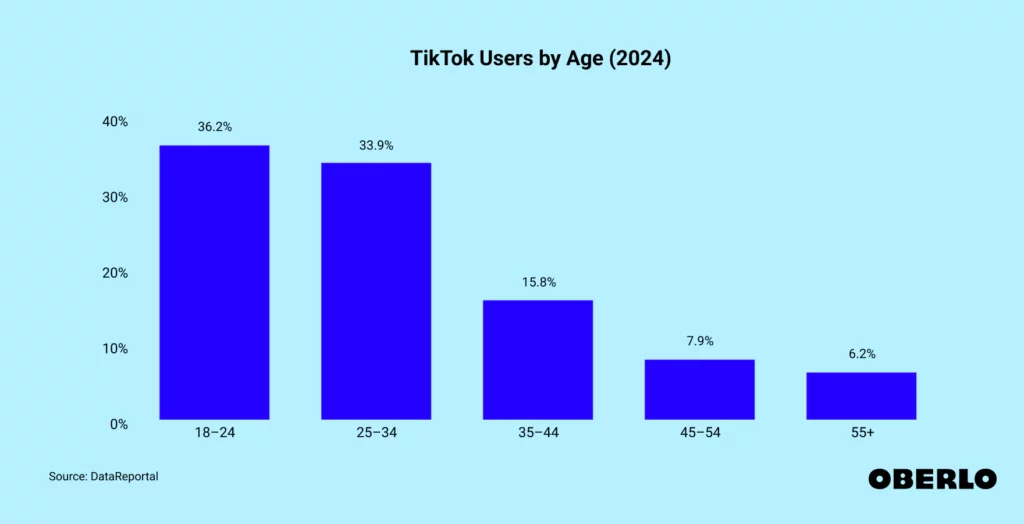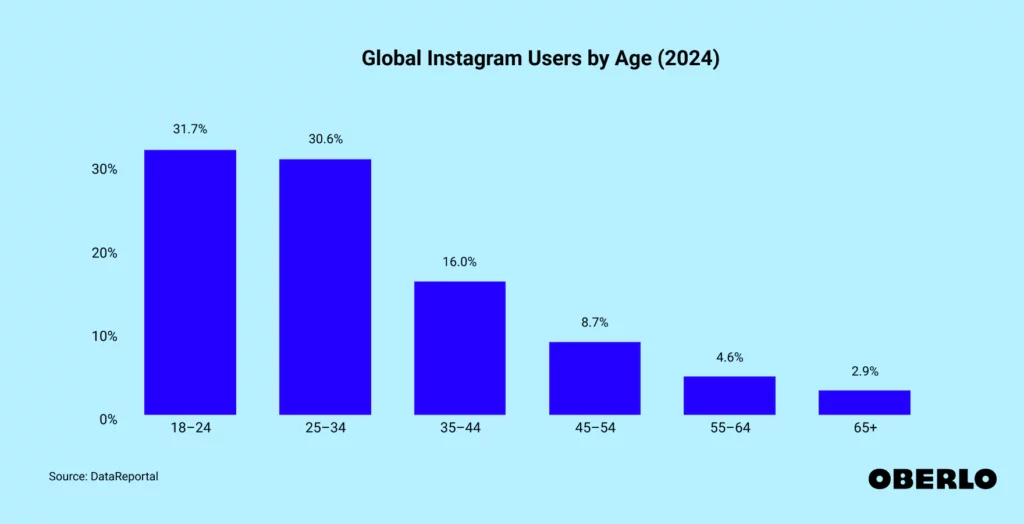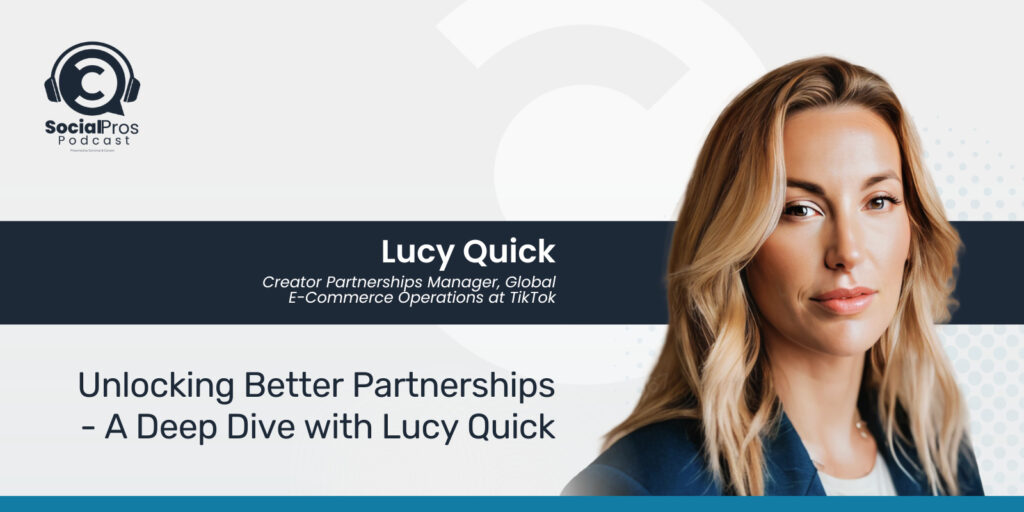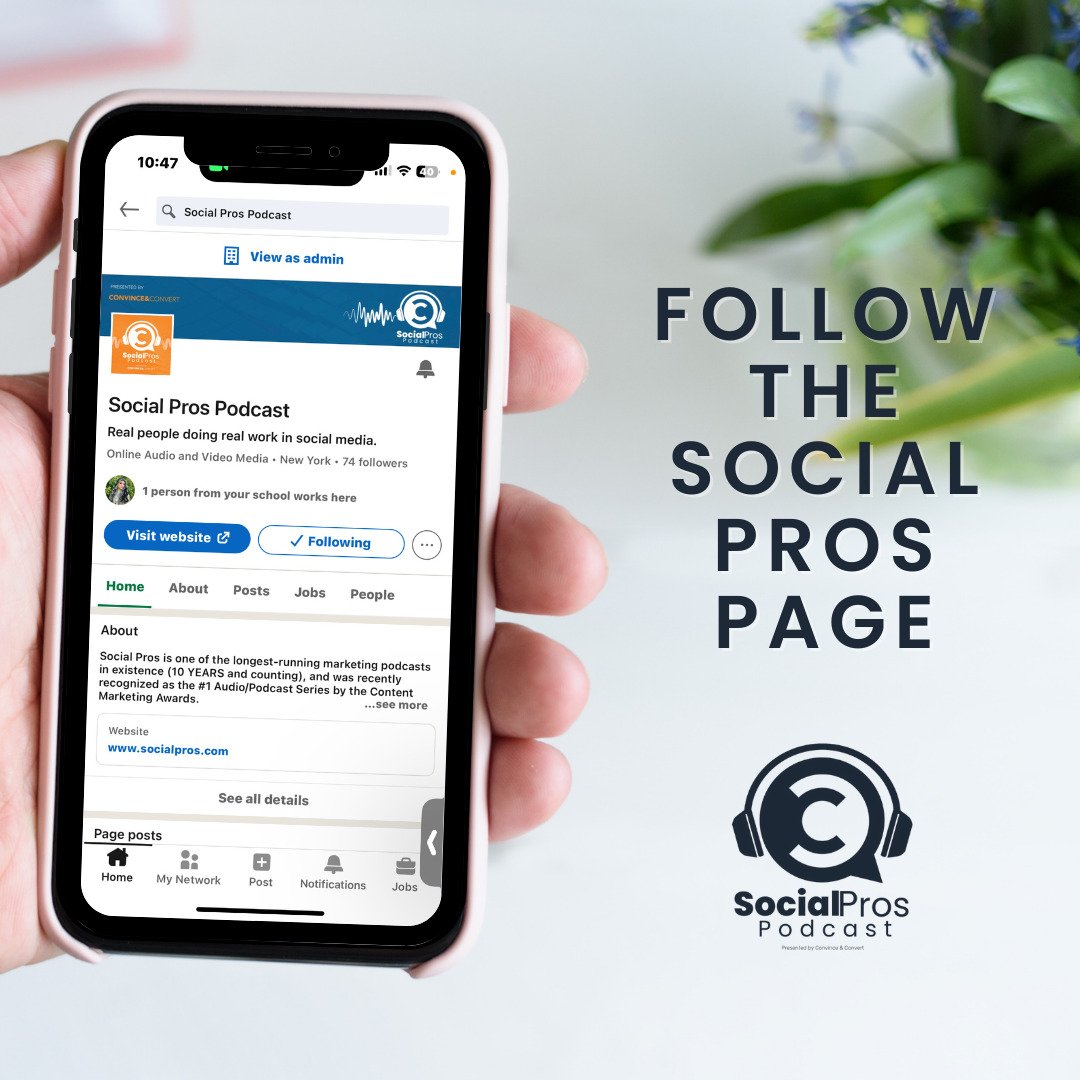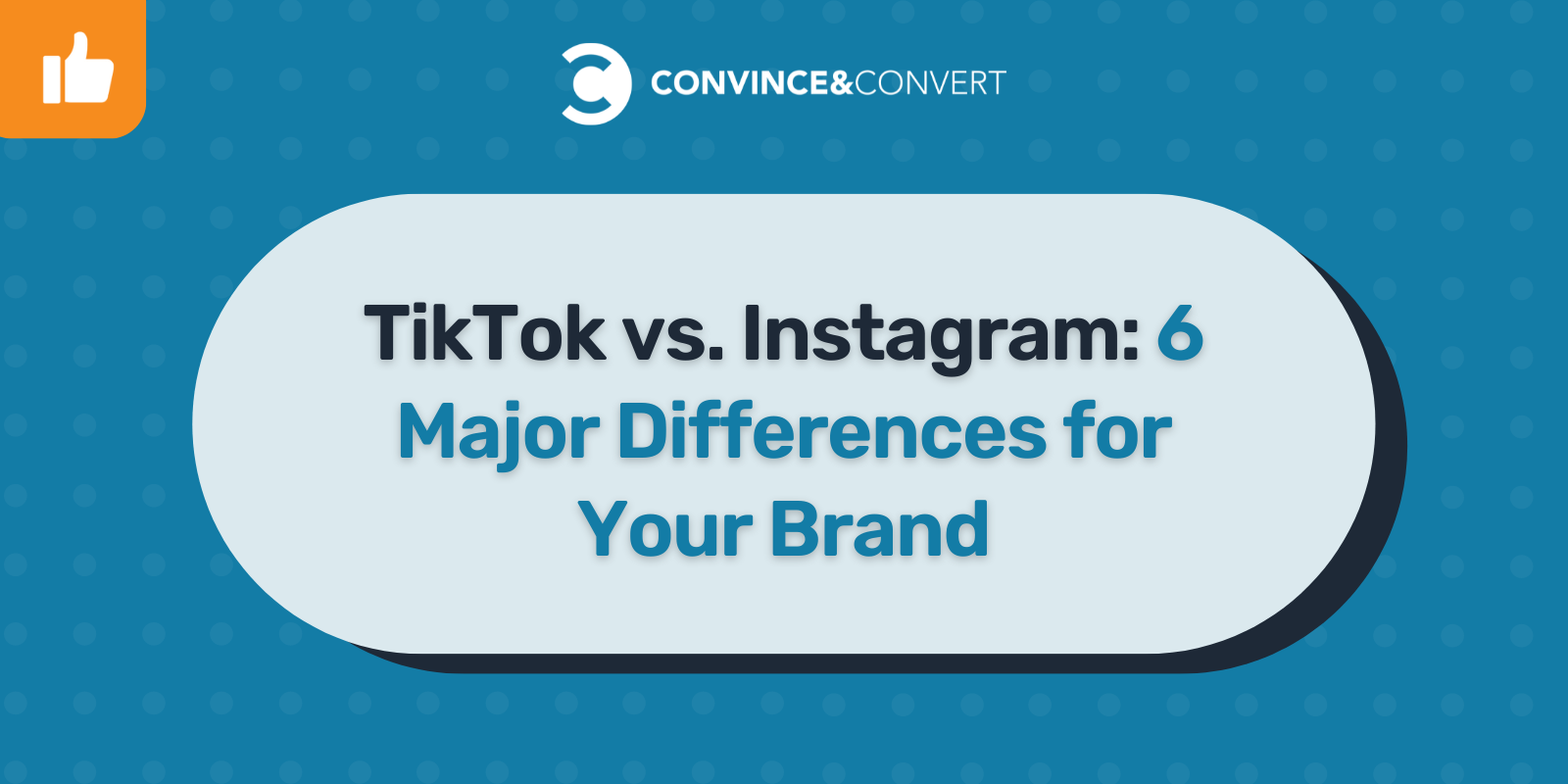
Launched in 2016, TikTok usage skyrocketed in the U.S. a few years later, and is now known as a major force in marketing with 1.5 billion active monthly users worldwide in 2024.
Brands pay influencers millions to access their audiences on the social video platform. Marketers at brands like Lyft are using it to generate free brand love by interacting with creators and fans.
But as big as TikTok is, how does it measure against Instagram – the other social video platform – with its 2 billion monthly active users worldwide?
In this article, we’ll cover each platform’s audience, content type and format, marketing opportunities, and even touch on current controversies.
Let’s start with the basics…
Audiences
TikTok’s audience
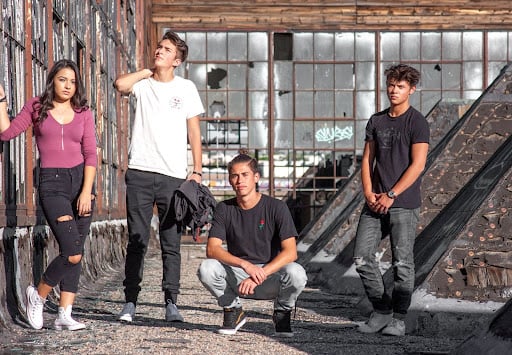
There are many similarities between TikTok and Instagram in terms of user base:
- Both platforms’ ready-to-buy audiences are easy to market to
- Both platforms are mainly used by young people (35 and under)
- Both platforms have a strong presence worldwide
That being said, there are some important differences.
The majority of TikTok users are 34 years old or younger. The biggest audience is Gen Z, followed by Millennials, Gen X, and Boomers in that order (source):
As of June 2024, TikTok audiences skew male (54% men vs. 46% women), a shift from the previous year. TikTok is popular worldwide with 128 million users in Indonesia, 122 million in the United States, and 102 million in Brazil.
TikTok users tend to be more responsive to advertising. They are also eager to buy and download products aimed at younger people, like:
- Video games
- Inexpensive jewelry, house decor, and makeup
- Novelty products
- Budget cosmetics and perfumes
- Inexpensive ecommerce products
TikTok users respond well to branded content and influencer partnerships. They respond less to obvious advertising. If you do use advertising, make it look native and natural (i.e. not like an ad).
Instagram’s audience

Instagram is also heavily favored by Gen Z and Millennials. Audiences can be broken down as follows:
The genders are more evenly split on Instagram; 49% of users identify as female and 51% identify as male. As for Instagram audience sizes by country, India has the most users with 362 million, followed by the United States (170 million) and Brazil (135 million).
Instagram users are still responsive to advertising, but a little less so than TikTokers. They are more interested in products aimed at both genders of slightly older millennials, e.g.:
- More expensive jewelry
- Infoproducts for professionals and business owners
- Furniture and clothing
- Mid-range artwork, house decor, ecommerce products
- Premium ecommerce products, e.g. health products and make-up
Instagram’s audience responds well to ads and influencer partnerships.
Content Formats
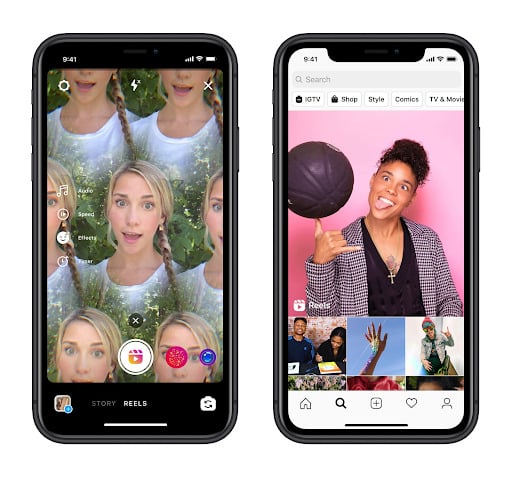
Instagram lets you create content in a variety of formats, including:
- Photos
- Short feed videos
- Instagram Reels (similar to TikTok)
- Instagram Stories
- Live streaming
- Long-form video content on IGTV
Instagram’s feed looks like most social media platforms, with endless scrolling. It’s easy to go from one post to the next without focusing on any of them. The content formats that work best for ads are Reels – Instagram’s answer to TikTok – and Stories.
TikTok lets users create and upload vertical videos that are up to 10 minutes long. That’s it. Instead of scrolling, you swipe up to move to the next video. Because of this, users are more likely to pay attention to and watch the whole thing (and ads).
Instagram gives you more content formats to work with. This is nice, but it can also make things confusing. Managing ads and content across Photos, Reels, Stories, etc gets complicated – and doesn’t always come with a good return on ad spend (ROAS).
TikTok has a very attractive ROAS… And with just one content format, it’s a lot easier to figure out. The best posting times, content themes, etc., are all a lot easier for TikTok marketers to optimize.
Content Types
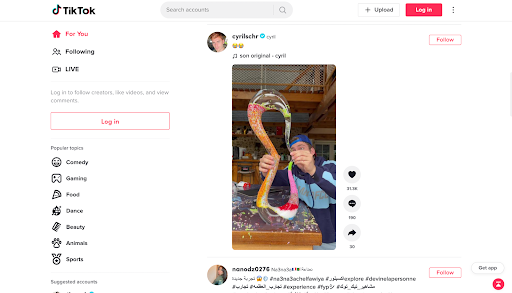
Content shared on Instagram tends to be highly edited, with various filters and effects applied in order to enhance their appearance.
Many users curate their accounts in such a way that all their photos have the same aesthetic and feel. When you visit their profile page, you can quickly get a sense of their style and who they are as a person.
The videos posted on TikTok tend to be much more raw, lo-fi, unedited. There are filters that can be used, but many times people will shoot a quick video and upload it instantly. When you visit their profile page, it’s harder to get a sense of their overall aesthetic.
The type of content that gets posted on Instagram and TikTok can differ as well. With Instagram, the focus tends to be just as much about the look and feel of content as it is about the subject matter itself.
With TikTok, the focus is very heavily on the subject matter of the videos. Creators film themselves doing dances, lip syncing, performing challenges, and more. The look and feel of the videos matter, but not nearly as much as what’s happening.
The above makes Instagram a strong choice for carefully designed ads. They blend in with Instagram’s native content.
TikTok is a better choice for influencer partnerships, native-looking ads, and your own content.
Advertising
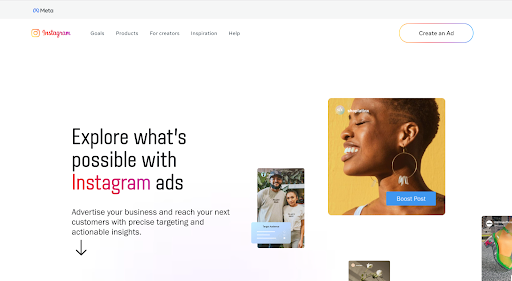
Both Instagram and TikTok allow brands to advertise on their platforms. Instagram allows brands to place both photo and video ads. They can be seen by the target audience in the newsfeed, stories, IGTV, and more.
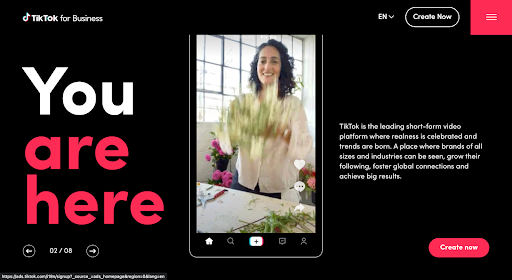
TikTok allows brands to place video ads between 5-60 seconds long. They can be seen by the target audience in between other videos, and look almost identical to organic TikTok posts.
Interestingly, when TikTok ads were compared against Instagram Reels ads, Reels outperformed TikTok by quite a bit. The reach was significantly greater, CPC was lower, and CPM was lower.
Overall, both platforms work well – although Story and Reel ads work best on Instagram. Experiment to see how you can make the most use of both platforms for your brand.
Organic Content

The TikTok algorithm also rewards users who produce a significant amount of content. If you struggle with creating content, the team at Convince & Convert can help you craft a strategy that’s right for your brand — something we did when Visit California launched their TikTok channel.
The Instagram algorithm rewards users who create less content but make it exceptionally high-quality. The more engagement a piece of content receives, the more exposure it receives on Instagram.
If you want to focus more on quality and less on quantity, Instagram may be the way to go for you. This makes it a good choice for B2B brands, busy marketers, etc.
Influencer Partnerships
If you want to partner with influencers, you should know the difference between Instagram influencer marketing and TikTok influencer marketing.
As we noted earlier, Instagram content tends to be more polished than TikTok content. If your brand has a particularly polished aesthetic, Instagram may be the best choice for you.
If you want sponsored content that is more raw and potentially authentic, consider TikTok.
According to Lucy Quick, Creator Partnerships Manager, Global E-Commerce Operations at TikTok, sponsored content that is educational resonates especially well with audiences on the platform. Audiences, especially younger demographics, do not want to feel as if they are being sold to. For example, they are more apt to join a live-stream with an influencer who is doing a tutorial than one showing off their top 10 favorite products.
Controversies
It’s important to note that while Instagram and TikTok are both mainstream platforms, they also are subject to ongoing controversies.
TikTok has been under investigation by the U.S. government, leading to the development of a TikTok “ban-or-sell” bill that was passed in April 2024, and is currently being challenged.
Instagram and its parent company, Meta, have been involved in lawsuits pertaining to data-breaches and manipulating the mental health of teens.
As a marketer, it’s crucial to stay informed of these developments and plan accordingly with how they impact your brand values and long-term social strategy.
Final Thoughts
Both Instagram and TikTok present unique marketing opportunities for businesses. It’s important to understand the differences between the two platforms so that you can make an informed decision about which one is right for your marketing efforts. There’s no magic answer for which platform is better. If you need help analyzing the best fit for your brand, Convince & Convert can help.
Editor’s note: This article was originally published in November 2022, and has been updated and republished in June 2024.
Lorem ipsum dolor sit amet, consectetur adipiscing elit. Ut elit tellus, luctus nec ullamcorper mattis, pulvinar dapibus leo.

